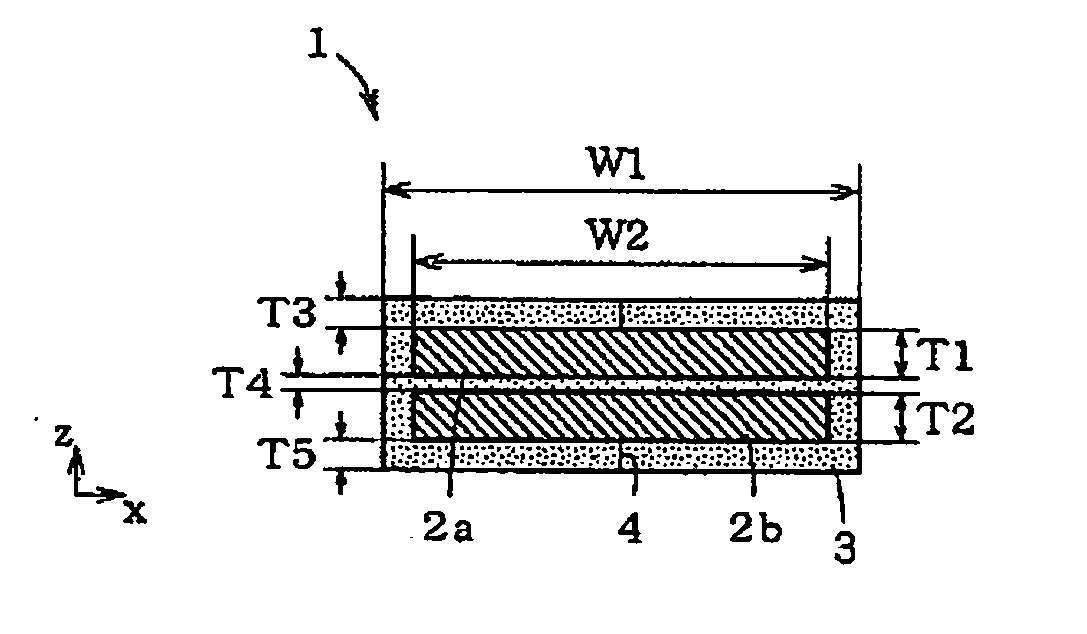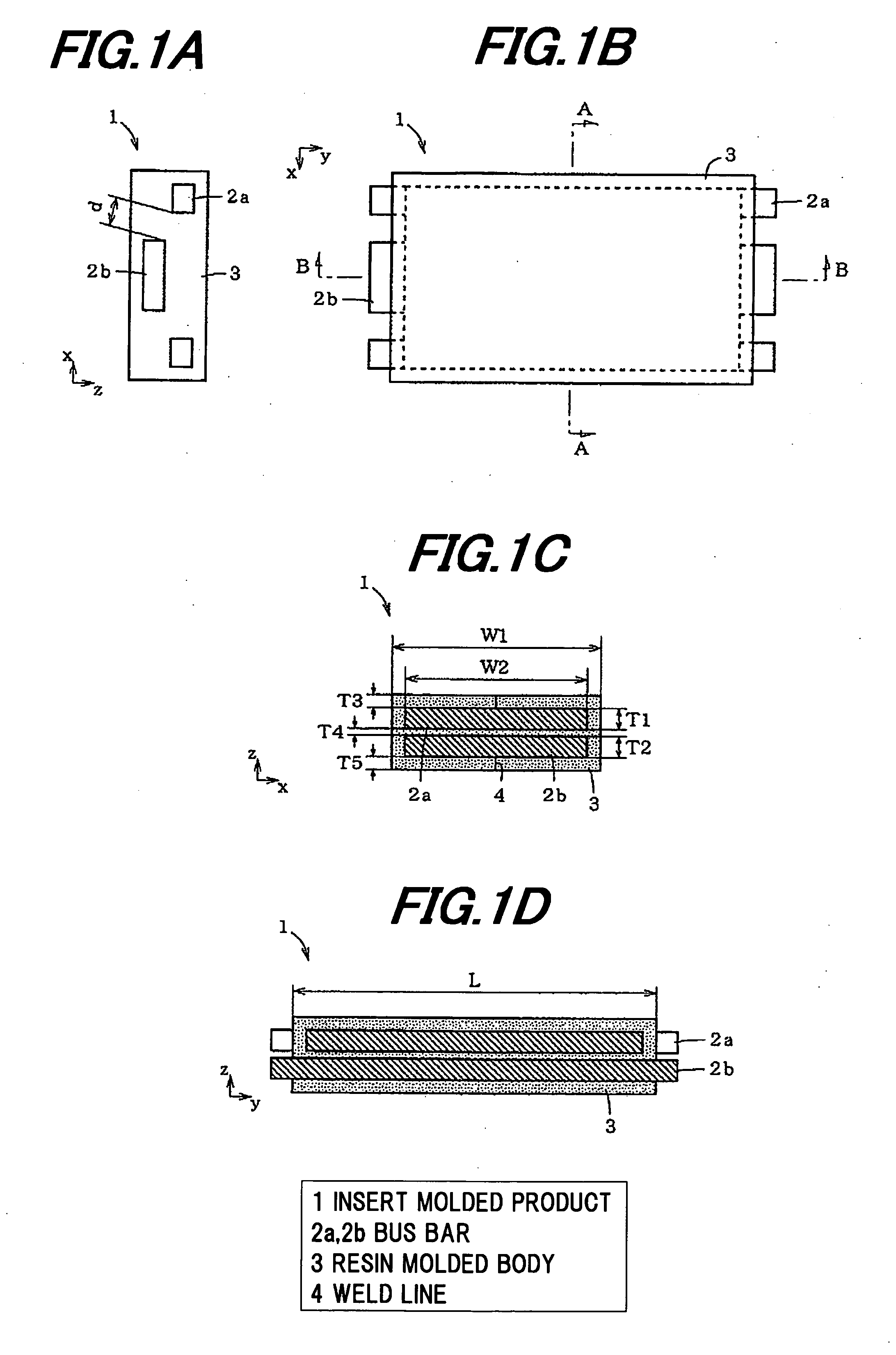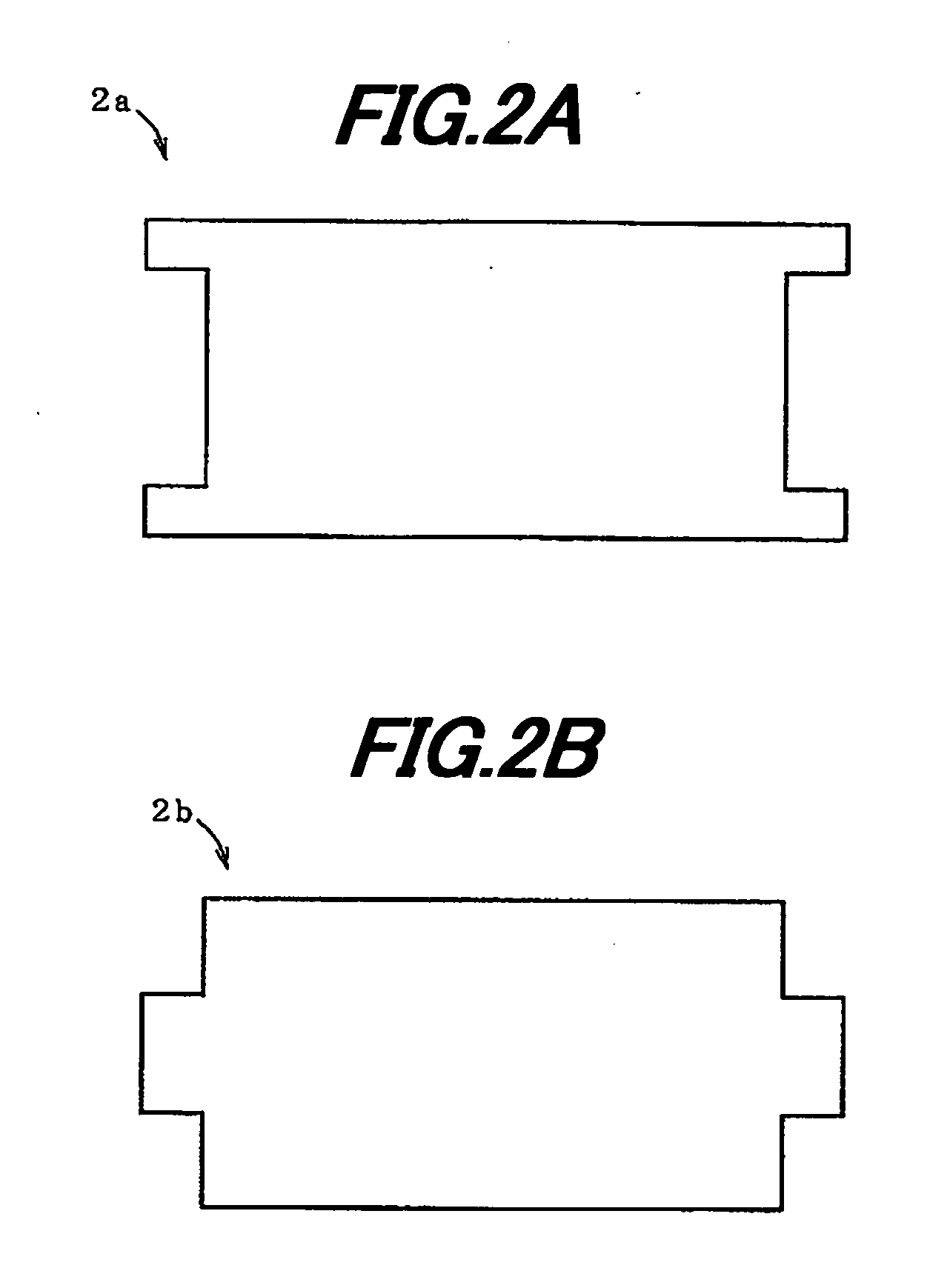Insert molding method and insert molded product
- Summary
- Abstract
- Description
- Claims
- Application Information
AI Technical Summary
Benefits of technology
Problems solved by technology
Method used
Image
Examples
first embodiment
Without Supporting Member
[0050]FIG. 1 are views showing an insert molded product in a first embodiment of the invention, wherein FIG. 1A is a side view, FIG. 1B is a plan view, FIG. 1C is a cross sectional view taken on line A-A (horizontal cross sectional view) and FIG. 1D is a cross sectional view taken on line B-B (vertical cross sectional view).
[0051]As shown in FIG. 1, an insert molded product 1 in the first embodiment is composed of bus bars (conductors) 2a and 2b as plural (two in the drawing) inset members separately arranged at a set interval, and a resin molded body 3 for covering the gap between the bus bars 2a and 2b as well as the periphery thereof. Here, the set interval is a distance by which electrical insulation between the bus bars 2a and 2b is well maintained, and which is a design matter naturally taken into consideration for forming the insert molded product 1.
[0052]In FIG. 1, T1 and T2 respectively denote thicknesses of the bus bars 2a and 2b, T3 and T5 denote ...
second embodiment
With a Supporting Member Near the Center
[0079]The insert molding method in the second embodiment is different from that in the first embodiment in that a supporting member 10 which contacts with the bus bars 2a and 2b along the length direction is inserted into the molding die 5, and then, the supporting member 10 is separated from the bus bars 2a and 2b so as not to disturb the intrusion of the insulating resin 9 when the insulating resin 9 is intruded into the inner rim portion of the molding die 5.
[0080]The reason for inserting the supporting member 10 into the molding die 5 will be described below.
[0081]The both ends of the bus bars 2a and 2b in a y-axis direction (length direction) are restricted by the holding groove 6 so that the separation interval T4 between the bus bars 2a and 2b is not extended more than a certain length (T6+T4+T7−(T1+T2)) and that the distances T3 and T5 from the bus bars 2a, 2b to the inner wall surface of the molding die 5 does not fall below the certa...
third embodiment
With the Supporting Member on the Gate Side
[0084]The insert molding method in the third embodiment is different from that in the second embodiment in the position into which the supporting member 10 is inserted. That is, the supporting member 10 is inserted on the gate side in the third embodiment. The reason therefor will be described below.
[0085]If the insulating resin 9 is poured into the outer layer on the gate 8 side in the state that the small amount of the insulating resin 9 is poured into the inner layer, the force in a direction to narrow the separation interval T4 between the bus bars 2a and 2b acts due to the pressure of the insulating resin 9 of the outer layer, and it becomes difficult to pour the insulating resin 9 into the gap between the bus bars 2a and 2b. Such a phenomenon can be avoided by using the molding die 5 as shown in FIG. 11, where the bus bars 2a and 2b are pressed from the outside by the supporting member 10 on a side close to the gate 8. The supporting ...
PUM
| Property | Measurement | Unit |
|---|---|---|
| Length | aaaaa | aaaaa |
| Pressure | aaaaa | aaaaa |
| Width | aaaaa | aaaaa |
Abstract
Description
Claims
Application Information
 Login to View More
Login to View More - R&D
- Intellectual Property
- Life Sciences
- Materials
- Tech Scout
- Unparalleled Data Quality
- Higher Quality Content
- 60% Fewer Hallucinations
Browse by: Latest US Patents, China's latest patents, Technical Efficacy Thesaurus, Application Domain, Technology Topic, Popular Technical Reports.
© 2025 PatSnap. All rights reserved.Legal|Privacy policy|Modern Slavery Act Transparency Statement|Sitemap|About US| Contact US: help@patsnap.com



